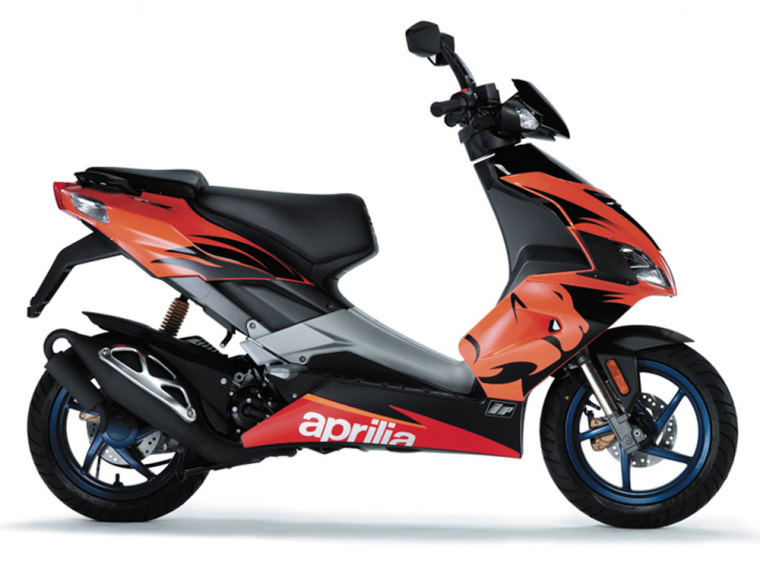High gas prices and traffic: They're the banes of a driver's existence. With neither about to improve anytime soon, there may be a small solution to these big problems. Scooters are an increasingly popular way to zip to errands, make parking a snap, and cut down on fuel costs.
Smaller and easier to use than their motorcycle cousins, scooters have long been popular in cities in Europe, Asia, and Latin America. But lately, the economics of scootering has helped them gain fans here in the U.S. With a final bill that won't exceed most credit-card limits, a scooter makes a great substitute for a station car or an ideal spare vehicle for errands. That's why sales are soaring in urban hot spots such as Miami and New York as well as in the suburbs.
All scooters share a basic ease of operation that makes it easy even for non-motorcyclists to get on and go. Start with the motor, where automatic "twist-and-go" transmissions are the rule. With no clutch to fuss about, you simply twist the throttle to take off. The brakes work just like a bicycle's, with a lever for each hand. Thanks to the positioning of the engine — directly in front of the rear wheel — scooters share a "step-through" design so you can sit upright, with your feet in front of you.
To get rolling, 50cc models such as Aprilia's spritely DiTech start at under $3,000. In the middle of the pack, models such as Vespa's classic Granturismo or Honda's Big Ruckus have enough oomph to take two passengers to highway speeds and sell for over $5,000. The most powerful class of touring-style rides — such as Yamaha's Majesty — comfortably cruise at highway passing speeds and can cost $6,000 and above. Also expect to ante up for insurance — around $400 per year for basic liability, fire, and theft — plus helmets, and the cost of a motorcycle licensing course, if necessary. Check out for state-by-state information on licensing and one-day scooter schools.
Running costs are even more appealing. Larger scooters get up to 60 miles per gallon; some, such as Aprilia's DiTech, can go twice as far on a gallon of gas. The DiTech's spartan efficiency comes from its high-revving, clean-running two-stroke 49cc power plant. A plus for this small engine is that in many states no special license is required on vehicles with engines under 50cc. The trade-off is a top speed south of 50 mph, so it's not the right choice for the highway. Rather the DiTech's sub-200-lb. weight and agile, short wheelbase make it a perfect runabout, easy to stash in small parking nooks at the deli or train station.
For longer journeys and more rugged urban byways, it's nice to have a little more power on tap. All the better if it's wrapped in a Vespa's timeless, forward leaning curves. Under the sculpted steel skin of the Granturismo, maker Piaggio has crammed a modern 198cc deep-purring, four-stroke single-cylinder engine that can comfortably — and stylishly — carry two adults, along with a few bags of groceries hung off the handy hook just below the handlebars.
If the Vespa is almost too pretty to risk the inevitable dings and dents of urban riding, the perfect substitute is Honda's Big Ruckus. With no metal or plastic panels to mar, this stripped-down ruffian barely notices the occasional sidewalk scrape. Its exposed frame not only looks tough but offers a great way to lock the bike up. Even bouncing over potholed Manhattan cross streets, the Big Ruckus feels more stable at higher speeds, thanks to a 249cc engine and a longer-wheel base.
For trips beyond city limits, a new class of supersized scooters offers the feel of a motorcycle but with less hassle. With its 400cc engine and tall windshield, Yamaha's Majesty is a great choice if you prefer to skip the train station and cruise directly to work at 65 mph on the highway. Once in the city, at 436 lb., Majesty is less agile than, say, the nimble DiTech in gridlocked traffic. But the Majesty offers features the DiTech can't touch, such as an underseat trunk big enough to hold two helmets — or Chinese food for four. Next time you need to pick up a takeout order, why drive when you can scoot?
